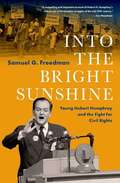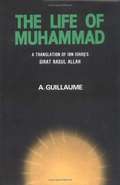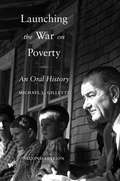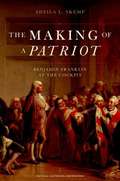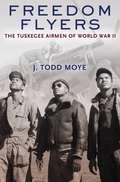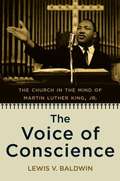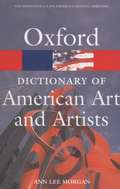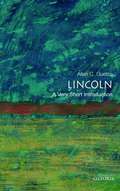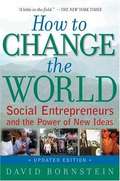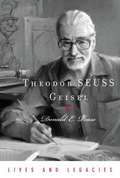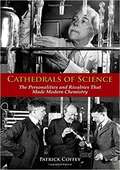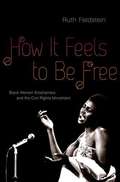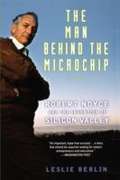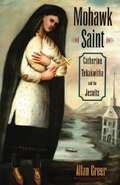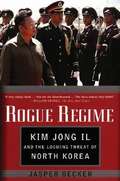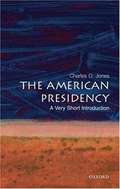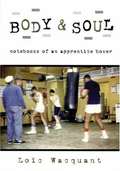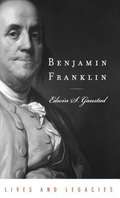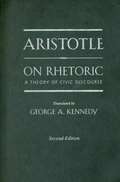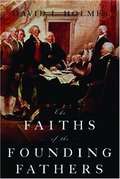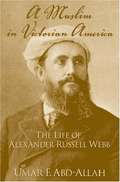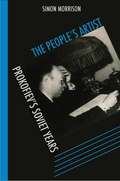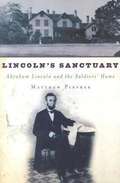- Table View
- List View
Into the Bright Sunshine: Young Hubert Humphrey and the Fight for Civil Rights
by Samuel G. FreedmanDuring one sweltering week in July 1948, the Democratic Party gathered in Philadelphia for its national convention. The most pressing and controversial issue facing the delegates was not whom to nominate for president -the incumbent, Harry Truman, was the presumptive candidate -but whether the Democrats would finally embrace the cause of civil rights and embed it in their official platform. Even under Franklin Roosevelt, the party had dodged the issue in order to keep a bloc of Southern segregationists-the so-called Dixiecrats-in the New Deal coalition. <p><p>On the convention's final day, Hubert Humphrey, just 37 and the relatively obscure mayor of the midsized city of Minneapolis, ascended the podium. Defying Truman's own desire to occupy the middle ground, Humphrey urged the delegates to "get out of the shadow of state's rights and walk forthrightly into the bright sunshine of human rights." Humphrey's speech put everything on the line, rhetorically and politically, to move the party, and the country, forward. <p><p>To the surprise of many, including Humphrey himself, the delegates voted to adopt a meaningful civil-rights plank. With no choice but to run on it, Truman seized the opportunity it offered, desegregating the armed forces and in November upsetting the frontrunner Thomas Dewey, a victory due in part to an unprecedented surge of Black voters. <p><p>The outcome of that week in July 1948-which marks its 75th anniversary as this book is published-shapes American politics to this day. And it was in turned shaped by Humphrey. His journey to that pivotal speech runs from a remote, all-white hamlet in South Dakota to the mayoralty of Minneapolis as he tackles its notorious racism and anti-Semitism to his role as a national champion of multiracial democracy. His allies in that struggle include a Black newspaper publisher, a Jewish attorney, and a professor who had fled Nazi Germany. And his adversaries are the white supremacists, Christian Nationalists, and America Firsters of mid-century America - one of whom tries to assassinate him. <p><p>Here is a book that celebrates one of the overlooked landmarks of civil rights history, and illuminates the early life and enduring legacy of the man who helped bring it about.
The Life of Muhammad
by Ibn Ishaq A. GuillaumeProfessor Guillaume's translation of the Sira of Ibn Ishaq is now reissued. The translator used Ibn Hisham's abridgement and also included many additions and variants found in the writings of early authors. The book thus presents in English practically all that is known of the life of theProphet. In the introduction, the translator discusses the character of the Sira in the light of the opinion of early Arabian scholars, noting especially the difficulties of the poetry. As the earliest monument of Arabian prose literature, the Sira remains a work of the first importance.
Launching the War on Poverty: An Oral History , 2nd Edition
by Michael L. GilletteHead Start, Job Corps, Foster Grandparents, College Work-Study, VISTA, Community Action, and the Legal Services Corporation are familiar programs, but their tumultuous beginning has been largely forgotten. Conceived amid the daring idealism of the 1960s, these programs originated as weapons in Lyndon Johnson's War on Poverty, an offensive spearheaded by a controversial new government agency. Within months, the Office of Economic Opportunity created an array of unconventional initiatives that empowered the poor, challenged the established order, and ultimately transformed the nation's attitudes.
The Making of a Patriot: Benjamin Franklin at the Cockpit
by Sheila L. SkempOn January 29, 1774, Benjamin Franklin was called to appear before the Privy Council - a select group of the King's advisors - in an octagonal-shaped room in Whitehall Palace known as the Cockpit. Spurred by jeers and applause from the audience in the Cockpit, Solicitor General AlexanderWedderburn unleashed a withering tirade against Franklin. Though Franklin entered the room as a dutiful servant of the British crown, he left as a budding American Revolutionary. In The Making of a Patriot, renowned Franklin historian Sheila Skemp presents a insightful, lively narrative that goes beyond the traditional Franklin biography - and behind the common myths - to demonstrate how Franklin's ultimate decision to support the colonists was by no means a foregoneconclusion. In fact, up until the Cockpit ordeal, he was steadfastly committed to achieving "an accommodation of our differences. " The Making of a Patriot also sheds light on the conspiratorial framework within which actors on both sides of the Atlantic moved toward revolution and it highlights howthis event ultimately pitted Franklin against his son, suggesting that the Revolution was, in no small part, also a civil war.
Freedom Flyers: The Tuskegee Airmen of World War II
by J. Todd MoyeAs the country's first African American military pilots, the Tuskegee Airmen fought in World War II on two fronts: against the Axis powers in the skies over Europe and against Jim Crow racism and segregation at home. Although the pilots flew more than 15,000 sorties and destroyed more than 200 German aircraft, their most far-reaching achievement defies quantification: delivering a powerful blow to racial inequality and discrimination in American life. In this inspiring account of the Tuskegee Airmen, historian J. Todd Moye captures the challenges and triumphs of these brave pilots in their own words, drawing on more than 800 interviews recorded for the National Park Service's Tuskegee Airmen Oral History Project. Denied the right to fully participate in the U. S. war effort alongside whites at the beginning of World War II, African Americans--spurred on by black newspapers and civil rights organizations such as the NAACP--compelled the prestigious Army Air Corps to open its training programs to black pilots, despite the objections of its top generals. Thousands of young men came from every part of the country to Tuskegee, Alabama, in the heart of the segregated South, to enter the program, which expanded in 1943 to train multi-engine bomber pilots in addition to fighter pilots. By the end of the war, Tuskegee Airfield had become a small city populated by black mechanics, parachute packers, doctors, and nurses. Together, they helped prove that racial segregation of the fighting forces was so inefficient as to be counterproductive to the nation's defense. Freedom Flyersbrings to life the legacy of a determined, visionary cadre of African American airmen who proved their capabilities and patriotism beyond question, transformed the armed forces--formerly the nation's most racially polarized institution--and jump-started the modern struggle for racial equality.
The Voice of Conscience: The Church in the Mind of Martin Luther King, Jr
by Lewis V. BaldwinIn this book, Lewis V. Baldwin contends that King was fundamentally a man of the church. Beginning with King's roots in Atlanta's Ebenezer Baptist Church, Baldwin traces the evolution of King's attitude toward the church through his college, seminary, graduate school, and civil rights years. The emphasis is on King's concept of the church as "the voice of conscience. " Baldwin persuasively claims that King challenged the church over the need for a higher spiritual and ethical ideal, and that King's moral leadership and eventual martyrdom did much to reestablish the credibility of the church at a time when some theologians were declaring the death of God. Baldwin critiques the contemporary church on the basis of King's prophetic model, and concludes by insisting that this model, not the entrepreneurial spirituality of the contemporary megachurches, embodies the best potential for much-needed church renewal.
The Oxford Dictionary of American Art and Artists
by Anne Lee MorganHailed by Choice as "concise, clear, and very informative," The Oxford Dictionary of American Art and Artists-- the first such dictionary to appear in three decades-- offers an informative, insightful, and long overdue resource on our nation's artistic heritage. Featuring 945 alphabetically arranged entries, here is an indispensable biographical and critical guide to American art from colonial times to contemporary postmodernism. Readers will find a wealth of factual detail and insightful analysis of the leading American painters, ranging from John Singleton Copley, Thomas Cole, and Mary Cassatt to such modern masters as Jackson Pollack, Romare Bearden, and Andy Warhol. The range of coverage is indeed impressive, but equally important is the quality of analysis that appears in entry after entry. Morgan gives readers a wealth of trustworthy and authoritative information as well as perceptive, well-informed criticism of artists and their work. In addition, the book is thoroughly cross-referenced, so readers can easily find additional information on any topic of interest.
Lincoln: A Very Short Introduction
by Allen C. GuelzoBeneath the surface of the apparently untutored and deceptively frank Abraham Lincoln ran private tunnels of self-taught study, a restless philosophical curiosity, and a profound grasp of the fundamentals of democracy. Now, in Lincoln: A Very Short Introduction, the award-winning Lincoln authority Allen C. Guelzo offers a penetrating look into the mind of one of our greatest presidents. If Lincoln was famous for reading aloud from joke books, Guelzo shows that he also plunged deeply into the mainstream of nineteenth-century liberal democratic thought. Guelzo takes us on a wide-ranging exploration of seven problems that confronted Lincoln and liberal democracy--equality, opportunity, the rule of law, slavery, freedom, and reconciliation. The book sets these problems and Lincoln's responses against the larger world of American and trans-Atlantic liberal democracy in the 19th century, comparing Lincoln not just to Andrew Jackson or John Calhoun, but to British thinkers such as Richard Cobden, Jeremy Bentham, and John Bright, and to French observers Alexis de Tocqueville and Francois Guizot. The Lincoln we meet here is an Enlightenment figure who struggled to create a common ground between a people focused on individual rights and a society eager to establish a certain moral, philosophical, and intellectual bedrock. Lincoln insisted that liberal democracy had a higher purpose, which was the realization of a morally right political order. But how to interject that sense of moral order into a system that values personal self-satisfaction--"the pursuit of happiness"--remains a fundamental dilemma even today. Abraham Lincoln was a man who, according to his friend and biographer William Henry Herndon, "lived in the mind." Guelzo paints a marvelous portrait of this Lincoln--Lincoln the man of ideas--providing new insights into one of the giants of American history.
Yasir Arafat: A Political Biography
by Barry Rubin Judith Colp RubinYasir Arafat stands as one of the most resilient, recognizable and controversial political figures of modern times. The object of unrelenting suspicion, steady admiration and endless speculation, Arafat has occupied the center stage of Middle East politics for almost four decades. Yasir Arafat is the most comprehensive political biography of this remarkable man. Forged in a tumultuous era of competing traditionalism, radicalism, Arab nationalism, and Islamist forces, the Palestinian movement was almost entirely Arafat's creation, and he became its leader at an early age. Arafat took it through a dizzying series of crises and defeats, often of his own making, yet also ensured that it survived, grew, and gained influence. Disavowing terrorism repeatedly, he also practiced it constantly. Arafat's elusive behavior ensured that radical regimes saw in him a comrade in arms, while moderates backed him as a potential partner in peace. After years of devotion to armed struggle, Arafat made a dramatic agreement with Israel that let him return to his claimed homeland and transformed him into a legitimized ruler. Yet at the moment of decision at the Camp David summit and afterward, when he could have achieved peace and a Palestinian state, he sacrificed the prize he had supposedly sought for the struggle he could not live without. Richly populated with the main events and dominant leaders of the Middle East, this detailed and analytical account by Barry Rubin and Judith Colp Rubin follows Arafat as he moves to Kuwait, Syria, Jordan, Lebanon, Tunisia, and finally to Palestinian-ruled soil. It shows him as he rewrites his origins, experiments with guerrilla war, develops a doctrine of terrorism, fights endless diplomatic battles, and builds a movement, constantly juggling states, factions, and world leaders. Whole generations and a half-dozen U.S. presidents have come and gone over the long course of Arafat's career. But Arafat has outlasted them all, spanning entire eras, with three constants always present: he has always survived, he has constantly seemed imperiled, and he has never achieved his goals. While there has been no substitute for Arafat, the authors conclude, Arafat has been no substitute for a leader who could make peace.
How to Change the World: Social Entrepreneurs and the Power of New Ideas
by David BornsteinNow published in more than twenty countries, David Bornstein's How to Change the World has become the bible for social entrepreneurship--in which men and women around the world are finding innovative solutions to a wide variety of social and economic problems. Whether delivering solar energy to Brazilian villagers, expanding work opportunities for disabled people across India, creating a network of home-care agencies to serve poor people with AIDS in South Africa, or bridging the college-access gap in the United States, social entrepreneurs are pioneering problem-solving models that will reshape the 21st century. How to Change the World provides vivid profiles of many such individuals and what they have in common. The book is an In Search of Excellence for social initiatives, intertwining personal stories, anecdotes, and analysis. Readers will discover how one person can make an astonishing difference in the world. The case studies in the book include Jody Williams, who won the Nobel Peace Prize for the international campaign against landmines she ran by e-mail from her Vermont home; Roberto Baggio, a 31-year old Brazilian who has established eighty computer schools in the slums of Brazil; and Diana Propper, who has used investment banking techniques to make American corporations responsive to environmental dangers. The paperback edition will offer a new foreword by the author that shows how the concept of social entrepreneurship has expanded and unfolded over the last few years, including the Gates-Buffett's charitable partnership, the rise of Google, and the increased mainstream coverage of the subject. The book will also update the stories of individual social entrepreneurs that appeared in the cloth edition.
Theodor Seuss Geisel
by Donald E. PeaseA biography on celebrated author Seuss, this covers both his life and work, also exposing his side less known, and how he came up with some of the most memorable characters in all of literature.
Cathedrals Of Science: The Personalities And Rivalries That Made Modern Chemistry
by Patrick CoffeyIn Cathedrals of Science, Patrick Coffey describes how chemistry got its modern footing-how thirteen brilliant men and one woman struggled with the laws of the universe and with each other. They wanted to discover how the world worked, but they also wanted credit for making those discoveries, and their personalities often affected how that credit was assigned. Gilbert Lewis, for example, could be reclusive and resentful, and his enmity with Walther Nernst may have cost him the Nobel Prize; Irving Langmuir, gregarious and charming, "rediscovered" Lewis's theory of the chemical bond and received much of the credit for it. Langmuir's personality smoothed his path to the Nobel Prize over Lewis. Coffey deals with moral and societal issues as well. These same scientists were the first to be seen by their countries as military assets. Fritz Haber, dubbed the "father of chemical warfare," pioneered the use of poison gas in World War I-vividly described-and Glenn Seaborg and Harold Urey were leaders in World War II's Manhattan Project; Urey and Linus Pauling worked for nuclear disarmament after the war. Science was not always fair, and many were excluded. The Nazis pushed Jewish scientists like Haber from their posts in the 1930s. Anti-Semitism was also a force in American chemistry, and few women were allowed in; Pauling, for example, used his influence to cut off the funding and block the publications of his rival, Dorothy Wrinch. Cathedrals of Science paints a colorful portrait of the building of modern chemistry from the late 19th to the mid-20th century.
How it Feels to be Free: Black Women Entertainers and the Civil Rights Movement
by Ruth FeldsteinIn 1964 Nina Simone sat at a piano in New York's Carnegie Hall to play what she called a "show tune." Then she began to sing: "Alabama's got me so upset / Tennessee made me lose my rest / And everybody knows about Mississippi Goddam!" Simone, and her song, became icons of the civil rights movement. But her confrontational style was not the only path taken by black women entertainers. In How It Feels to Be Free, Ruth Feldstein examines celebrated black women performers, illuminating the risks they took, their roles at home and abroad, and the Ways that they raised the issue of gender amid their demands for black liberation. Feldstein focuses on six women who made names for themselves in the music, film, and television industries: Nina Simone, Lena Horne, Miriam Makeba, Abbey Lincoln, Diahann Carroll, and Cicely Tyson. These women did not simply mirror black activism; their performances helped constitute the era's political history. Makeba connected America's struggle for civil rights to the fight against apartheid in South Africa, while Simone sparked high-profile controversy with her incendiary lyrics. Yet Feldstein finds nuance in their careers. In 1968, Hollywood cast the outspoken Lincoln as a maid to a white family in For Love of Ivy, adding a layer of complication to the film. That same year, Diahann Carroll took on the starring role in the television series Julia. Was Julia a landmark for casting a black woman or for treating her race as unimportant? The answer is not clear-cut. Yet audiences gave broader meaning to what sometimes seemed to be apolitical performances. How It Feels to Be Free demonstrates that entertainment was not always just entertainment and that "We Shall Overcome" was not the only soundtrack to the civil rights movement. By putting black women performances at center stage, Feldstein sheds light on the meanings of black womanhood in a revolutionary time.
The Man Behind The Microchip: Robert Noyce And The Invention Of Silicon Valley
by Leslie BerlinHailed as the Thomas Edison and Henry Ford of Silicon Valley, Robert Noyce was a brilliant inventor, a leading entrepreneur, and a daring risk taker who piloted his own jets and skied mountains accessible only by helicopter. Now, in The Man Behind the Microchip, Leslie Berlin captures not only this colorful individual but also the vibrant interplay of technology, business, money, politics, and culture that defines Silicon Valley. Here is the life of a high-tech industry giant. The co-founder of Fairchild Semiconductor and Intel, Noyce co-invented the integrated circuit, the electronic heart of every modern computer, automobile, cellular telephone, advanced weapon, and video game. With access to never-before-seen documents, Berlin paints a fascinating portrait of Noyce: an ambitious and intensely competitive multimillionaire who exuded a "just folks" sort of charm, a Midwestern preacher's son who rejected organized religion but would counsel his employees to "go off and do something wonderful," a man who never looked back and sometimes paid a price for it. In addition, this vivid narrative sheds light on Noyce's friends and associates, including some of the best-known managers, venture capitalists, and creative minds in Silicon Valley. Berlin draws upon interviews with dozens of key players in modern American business--including Andy Grove, Steve Jobs, Gordon Moore, and Warren Buffett; their recollections of Noyce give readers a privileged, first-hand look inside the dynamic world of high-tech entrepreneurship. A modern American success story, The Man Behind the Microchip illuminates the triumphs and setbacks of one of the most important inventors and entrepreneurs of our time.
Mohawk Saint: Catherine Tekakwitha and the Jesuits
by Allan GreerOn October 21, 2012, Pope Benedict XVI canonized Saint Kateri Tekakwitha as the first Native North American saint. Mohawk Saint is a work of history that situates her remarkable life in its seventeenth century setting, a time of wars, epidemics, and cultural transformations for the Indian peoples of the northeast. The daughter of a Algonquin mother and an Iroquois father, Catherine/Saint Kateri Tekakwitha (1656-1680) has become known over the centuries as a Catholic convert so holy that, almost immediately upon her death, she became the object of a cult. Today she is revered as a patron saint by Native Americans and the patroness of ecology and the environment by Catholics more generally, the first Native North American proposed for sainthood. Tekakwitha was born at a time of cataclysmic change, as Native Americans of the northeast experienced the effects of European contact and colonization. A convert to Catholicism in the 1670s, she embarked on a physically and mentally grueling program of self-denial, aiming to capture the spiritual power of the newcomers from across the sea. Her story intersects with that of Claude Chauchetière, a French Jesuit of mystical tendencies who came to America hoping to rescue savages from sin and paganism. But it was Claude himself who needed help to face down his own despair. He became convinced that Tekakwitha was a genuine saint and that conviction gave meaning to his life. Though she lived until just 24, Tekakwitha's severe penances and vivid visions were so pronounced that Chauchetière wrote an elegiac hagiography shortly after her death. With this richly crafted study, Allan Greer has written a dual biography of Saint Kateri Tekakwitha and Chauchetière, unpacking their cultures in Native America and in France. He examines the missionary and conversion activities of the Jesuits in Canada, and explains the Indian religious practices that interweave with converts' Catholic practices. He also relates how Tekakwitha's legend spread through the hagiographies and to areas of the United States, Canada, Europe, and Mexico in the centuries since her death. The book also explores issues of body and soul, illness and healing, sexuality and celibacy, as revealed in the lives of a man and a woman, from profoundly different worlds, who met centuries ago in the remote Mohawk village of Kahnawake.
Rogue Regime: Kim Jong Il and the Looming Threat of North Korea
by Jasper BeckerWhat happens when a dictator wins absolute power and isolates a nation from the outside world? North Korea, ruled by Kim Jong Il, seems destined to survive and linger on for some time, a menace to its own people and to the rest of the world.
The American Presidency: A Very Short Introduction
by Charles O. JonesThe expansion of executive powers amid the war on terrorism has brought the presidency to the center of heated public debate. Now, in The American Presidency, presidential authority Charles O. Jones provides invaluable background to the current controversy, in a compact, reliable guide to the office of the chief executive. This marvelously concise survey is packed with information about the presidency, some of it quite surprising. We learn, for example, that the Founders adopted the word "president" over "governor" and other alternatives because it suggested a light hand, as in one who presides, rather than rules. Indeed, the Constitutional Convention first agreed to a weak chief executive elected by congress for one seven-year term, later calling for independent election and separation of powers. Jones sheds much light on how assertive leaders, such as Andrew Jackson, Theodore Roosevelt, and FDR enhanced the power of the presidency, and illuminating how such factors as philosophy (Reagan's anti-Communist conservatism), the legacy of previous presidencies (Jimmy Carter following Watergate), relations with Congress, and the impact of outside events have all influenced presidential authority. He also explores the rise of federal power and the dramatic expansion of federal agencies, showing how the president takes a direct hand in this vast bureaucracy, and he examines the political process of selecting presidents, from the days of deadlocked conventions to the rise of the primary after World War II. "In 200 years," he writes, "the presidency had changed from that of a person--Washington followed by Adams, then Jefferson--to a presidential enterprise with a cast of thousands." Jones explains how this remarkable expansion has occurred and where it may lead in the future.
Body And Soul
by Loïc WacquantWhen French sociologist Loic Wacquant signed up at a boxing gym in a black neighborhood of Chicago's South Side, he had never contemplated getting close to a ring, let alone climbing into it. Yet for three years he immersed himself among local fighters, amateur and professional. He learned the Sweet science of bruising, participating in all phases of the pugilist's strenuous preparation, from shadow-boxing drills to sparring to fighting in the Golden Gloves tournament. In this experimental ethnography of incandescent intensity, the scholar-turned-boxer dissects the making of prizefighters and supplies a model for a "carnal sociology" capable of capturing "the taste and ache of action. " Body and Soul marries the analytic rigor of the sociologist with the stylistic grace of the novelist to offer a compelling portrait of a bodily craft and of life and labor in the black American ghetto at century's end, but also a revealing tale of self transformation and social transcendence. And, by fleshing out Pierre Bourdieu's signal concept of habitus, it deepens our theoretical grasp of human practice.
Benjamin Franklin
by Edwin S. GaustadThe tenth and youngest son of a poor Boston soapmaker, Benjamin Franklin would rise to become, in Thomas Jefferson's words, "the greatest man and ornament of his age. " In this short, engaging biography, historian Edwin S. Gaustad offers a marvelous portrait of this towering colonial figure, illuminating Franklin's character and personality. Here is truly one of the most extraordinary lives imaginable, a man who, with only two years of formal education, became a printer, publisher,postmaster, philosopher, world-class scientist and inventor, statesman, musician, and abolitionist. Gaustad presents a chronological account of all these accomplishments, delightfully spiced with quotations from Franklin's own extensive writings. The book describes how the hardworking Franklin became at age 24 the most successful printer in Pennsylvania and how by 42, with the help of Poor Richard's Almanack, he had amassed enough wealth to retire from business. We then follow Franklin's nextbrilliant career, as an inventor and scientist, examining his pioneering work on electricity and his inventions of the Franklin Stove, the lightning rod, and bifocals, as well as his mapping of the Gulf Stream, a major contribution to navigation. Lastly, the book covers Franklin's role as America's leading statesman, ranging from his years in England before the Revolutionary War to his time in France thereafter, highlighting his many contributions to the cause of liberty. Along the way, Gaustad sheds light on Franklin's personal life, including his troubled relationship with his illegitimate son William, who remained a Loyalist during the Revolution, and Franklin's thoughts on such topics as religion and morality. Written by a leading authority on colonial America, this compact biography captures in a remarkably small space one of the most protean lives in our nation's history.
On Rhetoric: A Theory of Civic Discourse
by Aristotle George A. KennedyThis new edition of George A. Kennedy's highly acclaimed translation and commentary offers the most faithful English version ever published of Aristotle's classic work, On Rhetoric.
The Faiths of the Founding Fathers
by David L. HolmesIt is not uncommon to hear Christians argue that America was founded as a Christian nation. But how true is this claim? In this compact book, David L. Holmes offers a clear, concise and illuminating look at the spiritual beliefs of our founding fathers. He begins with an informative account of the religious culture of the late colonial era, surveying the religious groups in each colony. In particular, he sheds light on the various forms of Deism that flourished in America, highlighting the profound influence this intellectual movement had on the founding generation. Holmes then examines the individual beliefs of a variety of men and women who loom large in our national history. He finds that some, like Martha Washington, Samuel Adams, John Jay, Patrick Henry, and Thomas Jefferson's daughters, held orthodox Christian views. But many of the most influential figures, including Benjamin Franklin, George Washington, John and Abigail Adams, Jefferson, James and Dolley Madison, and James Monroe, were believers of a different stripe. Respectful of Christianity, they admired the ethics of Jesus, and believed that religion could play a beneficial role in society. But they tended to deny the divinity of Christ, and a few seem to have been agnostic about the very existence of God. Although the founding fathers were religious men, Holmes shows that it was a faith quite unlike the Christianity of today's evangelicals. Holmes concludes by examining the role of religion in the lives of the presidents since World War II and by reflecting on the evangelical resurgence that helped fuel there election of George W. Bush. An intriguing look at a neglected aspect of our history, the book will appeal to American history buffs as well as to anyone concerned about the role of religion in American culture.
Who's Who in Jewish History
by Joan Comay Lavinia Cohn-SherbokJoan Comay's Who's Who in the Old Testament followed the history of Jewish people up to the end of the First Book of Maccabees in 135 B.C. In Who's Who in Jewish History she continues this fascinating story from that point up to the present day, a period of over twenty centuries. Offering entries on the lives of nearly one thousand men and women, this guide provides and in-depth look at Jews who have made a significant contribution to the history and thought of their own people, individual Jews who have been eminent in the general life and culture of their time, and non-Jews who have had a special impact on Jewish history. Here in brilliant procession are scholars, courtiers, and martyrs, from Simeon Bar-Giora (leader of the first Jewish revolt in the first century B.C.) through Aaron of Lincoln (the twelfth-century English money lender) to Golda Meir (the fourth prime minister of Israel) and Elie Wiesel (Holocaust survivor and world renowned author). Including a special chronology of Jewish history, Who's Who in Jewish History is an intriguing parade of celebrated individuals from almost every area of human achievement.
A Muslim in Victorian America: The Life of Alexander Russell Webb
by Umar F. Abd-AllahA biography of Alexander Russell Webb, a central figure of American Islam during the late nineteenth and early twentieth centuries. A native of the Hudson Valley, he was a journalist, editor, and civil servant. Raised a Presbyterian, Webb early on began to cultivate an interest in other religions and became particularly fascinated by Islam. While serving as U.S. consul to the Philippines in 1887, he took a greater interest in the faith and embraced it in 1888, becoming one of the first Americans known to have done so. Within a few years, he began corresponding with important Muslims in India. Webb became an enthusiastic propagator of the faith, founding the first Islamic institution in the United States: the American Mission. He wrote numerous books intended to introduce Islam to Americans, started the first Islamic press in the United States, published a journal entitled the Modern World, and served as the representative of Islam at the 1893 World's Parliament of Religions in Chicago. In 1901, he was appointed Honorary Turkish Consul General in New York and was invited to Turkey, where he received two Ottoman medals of merit. In this first-ever biography of Webb, Umar F. Abd-Allah examines Webb's life and uses it as a window through which to explore the early history of Islam in America. Except for his adopted faith, every aspect of Webb's life was, as Abd-Allah shows, quintessentially characteristic of his place and time. It is because he was so typically American that he was able to serve as Islam's ambassador to America (and vice versa).
The People's Artist: Prokofiev's Soviet Years
by Simon MorrisonSergey Prokofiev was one of the twentieth century's greatest composers--and one of its greatest mysteries. In 1918, he escaped a Russia engulfed in revolution, eventually settling in Paris. Then, in 1936, he surprisingly returned to the increasingly brutal Soviet Union. There he seemed to disappear, the details of his life and work filtered by a security apparatus that kept Prokofiev--and his legacy--under careful guard. Until now. In The People's Artist, Simon Morrison draws on groundbreaking research to illuminate the life of this major composer, offering profound new insight into the master's work. Morrison was the first scholar to gain access to the composer's sealed files in the Russian State Archives, where he uncovered a wealth of previously unknown scores, unexpurgated speeches and writings, correspondence, and unopened journals and diaries. The story he found in these hoarded documents is one of lofty hopes and disillusionment, of personal and creative upheavals. Prokofiev seemed to thrive on uncertainty during his Paris years, stashing scores in suitcases and drafting librettos and scenarios on hotel letterhead. He stunned his fellow émigrés by returning at a time when the All-Union Committee on Arts Affairs took command of all musical activities. At first, Stalin's regime treated him as a celebrity, but Morrison details how the bureaucratic machine ground him down with corrections and censorship (forcing rewrites of such major works as Romeo and Juliet and War and Peace), until it finally censured him in 1948, ending his career and breaking his health. Along the way, the author deftly analyzes Prokofiev's music in light of these archival discoveries. Morrison combines truly groundbreaking research with astute musical analysis to create a stark new image of a great composer. Additionally, Morrison discusses in detail Prokofiev's Fifth, Sixth, and Seventh symphonies, the Ninth piano sonata, the cello sonata, the Violin sonata in d minor and his last complete work, the Sinfonia Concertante. Simon Morrison is Professor of Music at Princeton University. He is the author of Russian Opera and the Symbolist Movement and the editor of Prokofiev and His World. He restored the original, uncensored version of Romeo and Juliet for the Mark Morris Dance Group, which premiered the work in July 2008.
Lincoln's Sanctuary: Abraham Lincoln and the Soldiers' Home
by Matthew PinskerAfter the heartbreaking death of his son Willie, Abraham Lincoln and his family fled the gloom that hung over the White House, moving into a small cottage in Washington, D.C., on the grounds of the Soldiers' Home, a residence for disabled military veterans. In Lincoln's Sanctuary, historian Matthew Pinsker offers a fascinating portrait of Lincoln's stay in this cottage and tells the story of the president's remarkable growth as a national leader and a private man.
